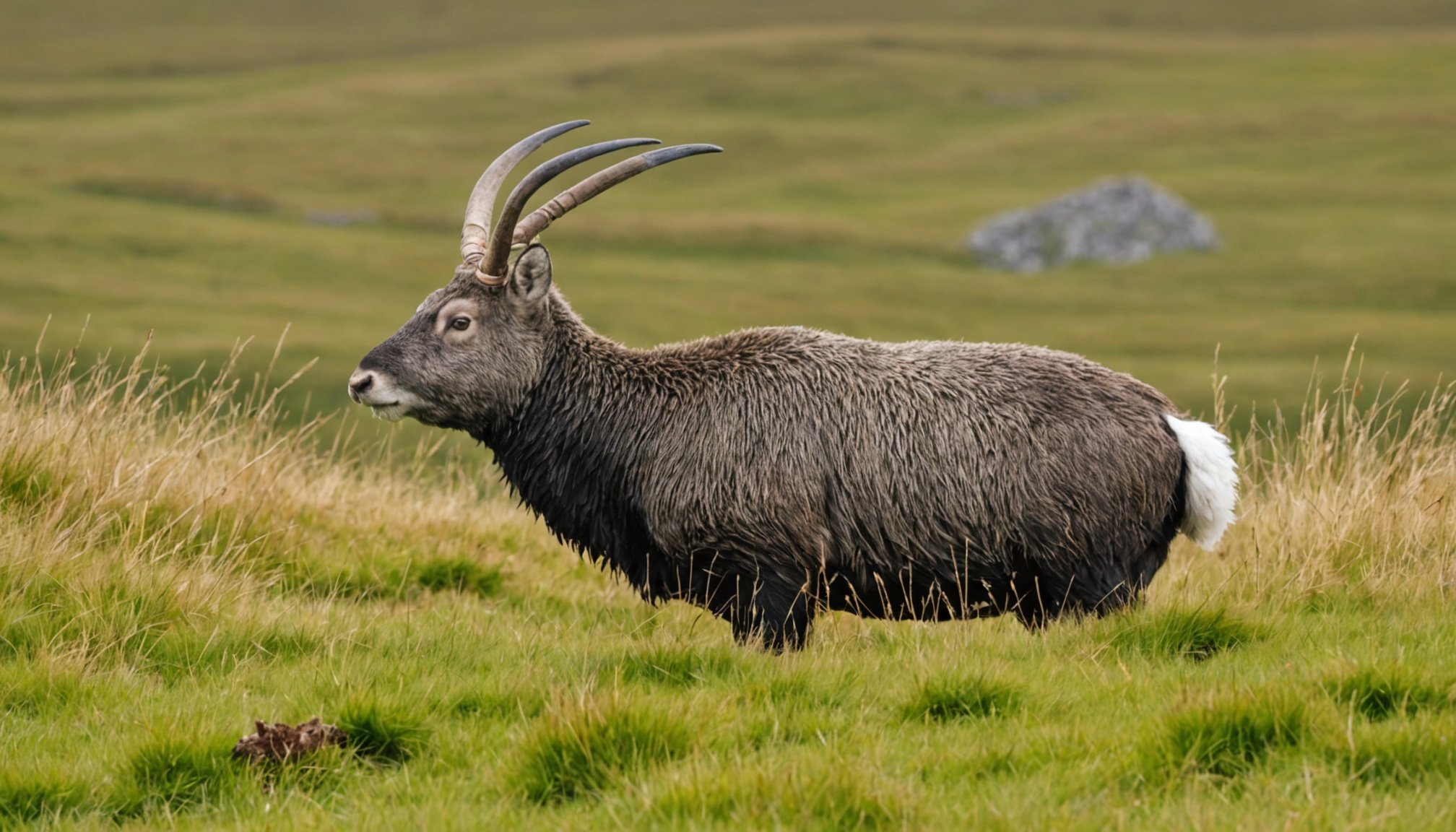Overview of Wildlife in the Hebrides
Nestled off the northwestern coast of Scotland, the Hebrides offers a unique experience for those seeking to explore UK nature. The diverse Hebrides wildlife ranges from otters and seals to majestic sea eagles and red deer: a testament to the vibrant biodiversity spread across the islands. Understanding the behavior and variety of these species is not just intriguing, but essential for ensuring personal safety while exploring these rugged landscapes.
The habitats in this region include lush coastal areas, mysterious moorlands, and serene freshwater lakes. Each ecosystem supports different forms of wildlife, creating niches that sustain both common and rare species. For instance, the moors are known for their population of red deer, while the coastal areas are perfect for observing seals and seabirds.
This might interest you : Restoring water vole populations: creative approaches to rejuvenate their natural habitats in the uk
Engaging with the local wildlife enhances one’s appreciation of these ecological treasures. Yet, it is crucial to respect the animals’ space and understand their behavioral cues to avoid any negative encounters. By immersing yourself in the wild beauty of the Hebrides, you not only grow closer to nature but also play a role in its preservation, ensuring it remains a sanctuary for future generations to cherish.
Best Practices for Observing Wildlife
Observing wildlife in their natural habitat can be an exciting experience, but it’s essential to adhere to best practices to ensure safe and responsible viewing. Responsible viewing begins with observing animals from a safe distance. This not only protects the observer but also prevents causing stress or disturbance to the wildlife. Approaching too closely can alter the animals’ behavior, leading to unnecessary stress or even aggressive responses.
Topic to read : Top fish varieties for uk ponds: boost your local ecosystem with these ideal selections
To minimise disturbance, use binoculars or telephoto lenses for a closer look without encroaching on their space. Additionally, aim to be as inconspicuous as possible. Avoid sudden movements or loud noises that might startle or provoke animals.
The best times for wildlife watching are often at dawn or dusk when animals are most active. In the Hebrides, specific locations such as coastal areas offer excellent opportunities for observing seals and seabirds. Meanwhile, moorlands may provide glimpses of red deer and other terrestrial wildlife.
Remember, ethical wildlife watching isn’t just about what you do, but also what you refrain from doing—avoid feeding animals or trying to attract them. Respecting their environment ensures a more authentic and rewarding observation experience.
Safety Tips for Interacting with Hebrides Wildlife
Exploring the Hebrides and its plethora of wildlife is a remarkable journey, yet prioritising wildlife safety is essential. Various species in these regions can pose potential risks, including red deer during mating season and sea birds protecting their nests. Understanding how to manage these situations ensures a safer and more enriching encounter.
When engaging with wildlife, observe these essential dos and don’ts. Do maintain a respectful distance and use appropriate equipment, like binoculars, to enjoy the wildlife safely. Don’t attempt to touch or feed animals, as this can incite aggressive behaviour or disrupt natural habits.
Personal safety measures can greatly enhance your wildlife adventure. Always travel with a companion when hiking in remote areas, and share your location details with someone outside your group. Carry items such as a whistle, a basic first aid kit, and a map of the local area to ensure preparedness in unexpected scenarios.
In conclusion, appreciating the Hebrides wildlife is about learning to cherish its beauty while adopting safety measures to protect yourself and the ecosystem. By approaching wildlife interactions with informed caution, one can enjoy a secure and awe-inspiring journey.
Understanding Animal Behavior
Grasping the intricacies of animal behavior in the Hebrides can significantly enhance your wildlife interactions and bolster safety. Each species exhibits distinct behavioral traits that can provide insights into their emotions and intentions. For example, red deer might appear placid, but during rutting season, males can display heightened aggression. Recognizing such nuances ensures safer and more enriching experiences.
Key signs of stress or aggression in wildlife include a sudden shift in posture, vocalizations like hissing or growling, and rapid movements. For instance, seals may rear their heads and snort if feeling threatened, signalling an imminent retreat. Understanding these signals allows for timely withdrawal and prevents negative encounters.
To effectively interpret animal behavior, focus on the animal’s body language and subtle environmental changes. Detective cues like raised fur, widened eyes, or a stiffened tail can indicate agitation or irritation. Engage in quiet observation, minimizing your own movements to gauge the animal’s comfort level. Remember, these insights aren’t just about avoiding danger but also appreciating the varied wildlife interactions available in the Hebrides. By familiarising oneself with species-specific actions, wildlife enthusiasts can foster deeper connections with the natural world.
Emergency Contacts and Preparedness
Navigating the rugged environments of the Hebrides, while relishing wildlife interactions, demands a keen focus on preparedness. Familiarising yourself with local emergency contacts is vital to ensure swift assistance in unforeseen circumstances. The Scottish Highlands and Islands Wildlife Network offers crucial support, providing guidance on handling potentially dangerous wildlife encounters.
In any precarious situation, dialling 111 connects you to essential emergency services. Among the items you should carry, a satellite phone is advantageous for reaching emergency contacts in remote areas where cellular signals falter. A reliable first aid kit, equipped with essentials to address minor injuries, enhances your readiness for wilderness excursions. Navigational tools such as a map and compass remain indispensable to prevent disorientation amidst the expansive moorlands and coastal ecosystems.
Encountering hazardous wildlife behavior should prompt immediate reporting to local authorities. Accurately detailing incidents and locations allows wildlife rangers to assess and manage threats efficiently. By adopting these proactive measures, explorers can secure a harmonious balance between adventurous exploration and responsible, safe travel when engaging in such marvellous Hebrides wildlife experiences.
Conclusion: Intentional Exploration
Engaging in responsible travel within the Hebrides not only enriches your adventure but also contributes significantly to preserving its wildlife. By practicing sustainable exploration, visitors support the delicate balance of ecosystems that sustain such a vibrant mix of species. It’s imperative to approach your interactions with respect and mindfulness, remembering that each choice impacts the habitats and creatures that dwell in these unique landscapes.
Mindful interactions emphasize leaving no trace, respecting wildlife behaviors, and adhering to established trails. Intentional exploration allows you to deepen your connection with nature, understanding the role different species play in the ecological tapestry of the Hebrides. As you observe these natural wonders, consider contributing to conservation efforts, whether through volunteering or supporting local initiatives aimed at preserving the environment.
The joy of observing wildlife in the Hebrides lies in the harmonious relationship between humans and nature. By embracing informed practices and a respectful mindset, travellers ensure that future generations can experience and marvel at the same breathtaking landscapes and rich biodiversity. Through thoughtful engagement, visitors can enjoy not only the thrill of discovery but also the satisfaction of being stewards of this precious heritage.









